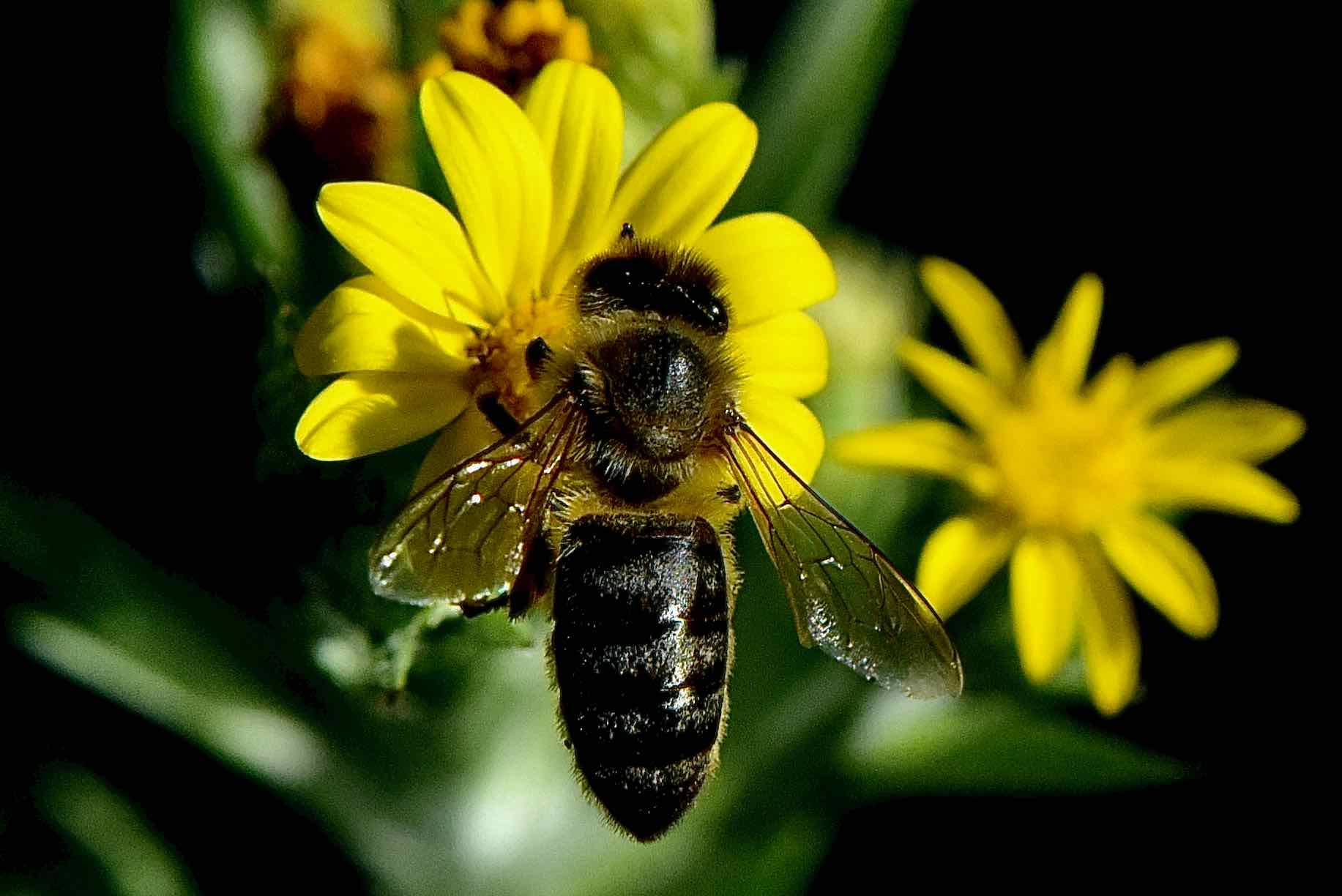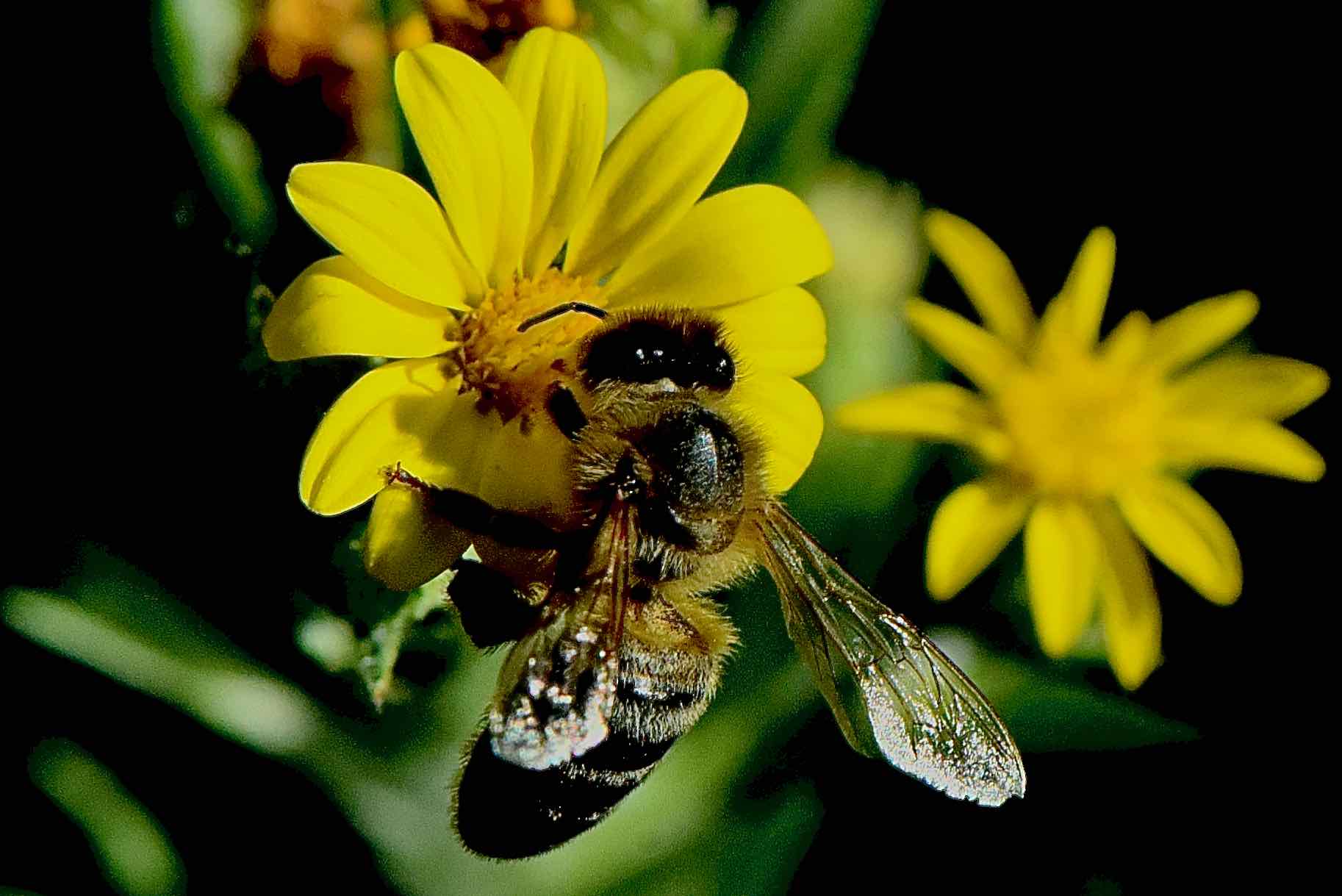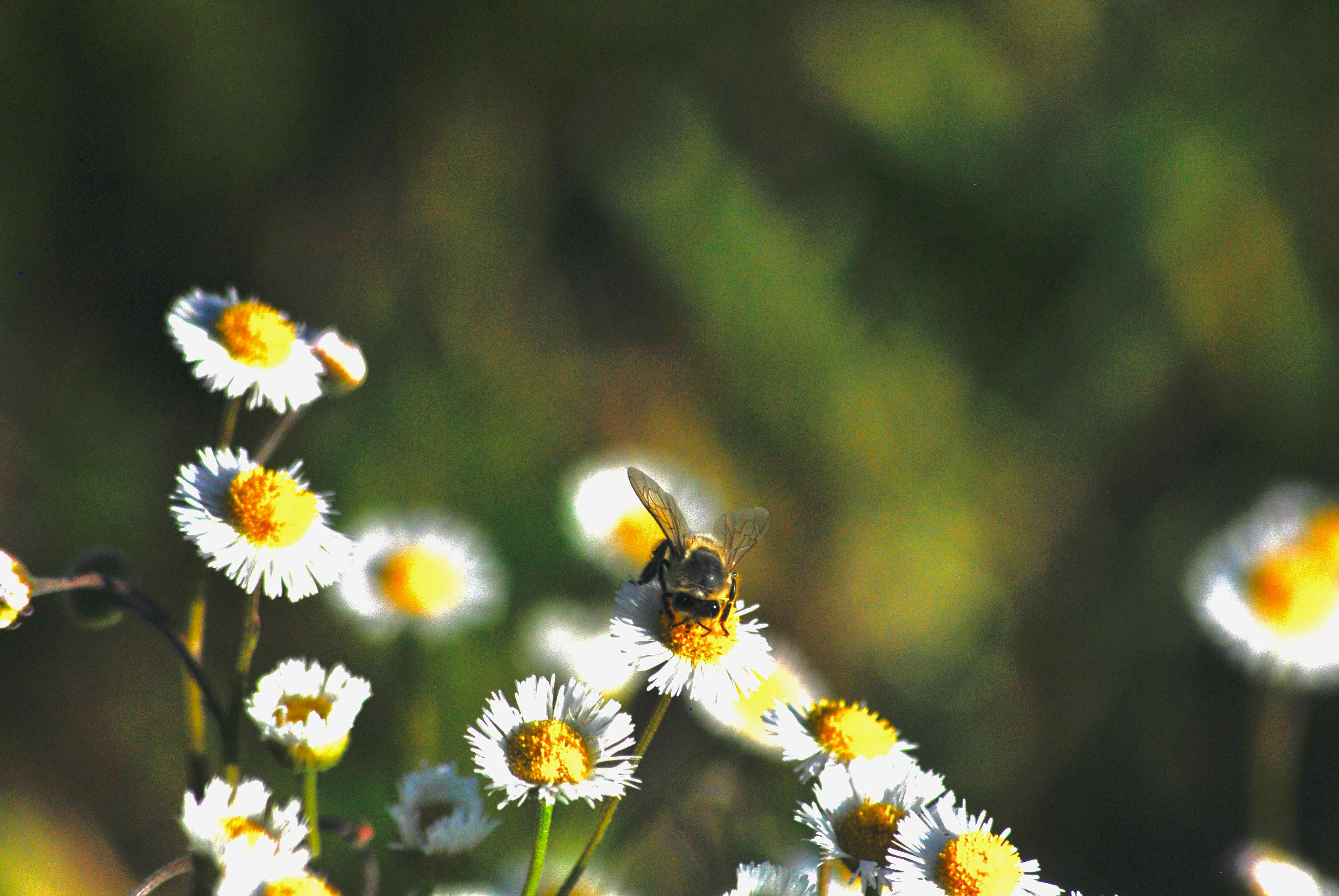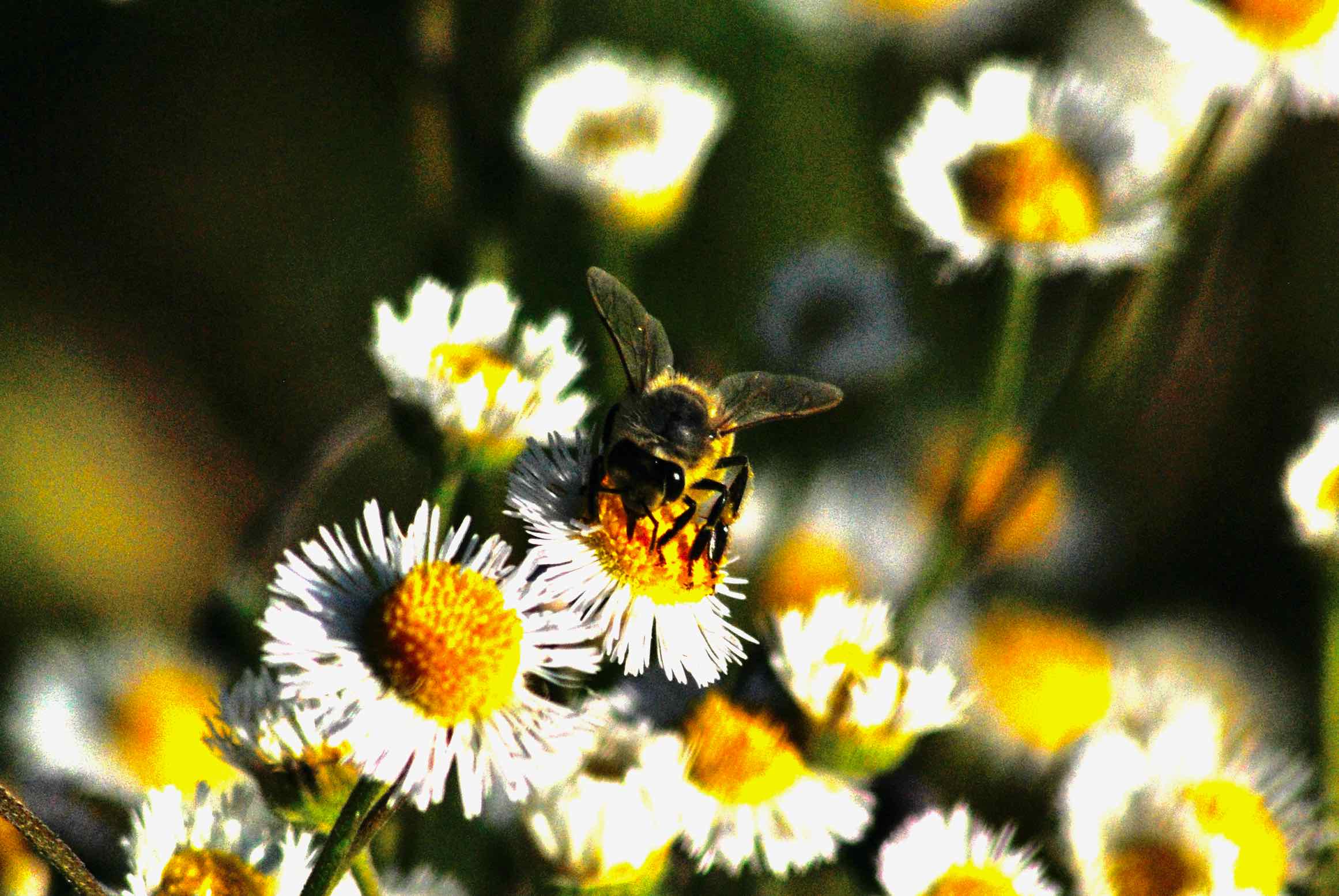
Western honeybee, photographed at Yamato Scrub Natural Area, Boca Raton, Palm Beach County, in November 2023.
The list of plants and animals we humans have imported to our shores over the past five centuries includes some monumental environmental disasters. Brazilian pepper and the Burmese python quickly come to mind.
But there’s one exotic animal that actually might be described as essential. Think about it. Where would agriculture throughout the Americas be without the bee, as in western honeybee?
They are so part of the scenery, so part of our culture that they seem like a native, or at least it should be. But English colonists brought bees, specificly western honeybees, Apis mellifera, with them to pollinate their crops and produce honey when they came to North America way back in 1622.
The western honeybee is native to parts of Europe, the Middle East and Africa. Over the centuries, it’s become naturalized on all continents save Antarctica.
Some bee basics: There are at least 20 recognized subspecies of the honeybee. The original variety brought here: A.m. mellifera is native to northern Europe. In the mid-19th century an Italian variety, A.m. ligustica was imported.
Altogether five honeybee varieties have been introduce to North America, plus the African honeybee, A.m. scutellata, which researchers imported to Brazil in the 1950s with the hope that it would improve honey production and subsequently made its way north, crossing into Texas in 1990 and Florida in the early 2000s. African honeybees are not cold tolerant, limiting their range within the state.
The African, or Africanized bee was seen as being better able to adapt to tropical climes than the western honeybee, which had developed in temperate regions. Problem is they defend themselves more aggressively than western honeybees and othewise behave in ways that make them more of a threat than their cousins.
How important is the westrn honeybee? These critters pollinate more than 100 crops that make up 30 percent of the food we eat. By one estimate in 2015, the economic contributions of honeybees totaled $15 billion in the U.S. alone. Clemson University upped the figure to $20 billion in 2023. In Florida, where agriculture remains a vital part of the economy, honeybee contributions are obviously significant, although the best dollar estimate we could find was a vague “billions.”
Mind you this does not include their importance in the natural world, pollinating wildflowers, like narrowleaf silkgrass shown in the pictures on this page.
We should note that there are something like 4,500 species of bees native to North America, so it’s not like the continent was lacking pollinators 500 years ago. Native species also pollinate commercial crops, but how much isn’t known.
Western honeybees are social animals, with a caste system involving a queen at the top of the hive, female worker bees and males, whose basic duty is to please the queen and fertilize her eggs. What happens to those eggs determines how they develop. Unfertilized eggs develop into males, fertilized eggs into female workers or queens.
The workers are fed a mix of pollen, nectar and something called brood food; future queens are fed pollen, nectar plus a food called royal jelly. All bees go through four stages of development, from egg to larvae to pupae to adult. Males take the longest time to develop, from egg to adult at 24 days; female workers, 21 days, queens surprisingly only 15 or 16 days.
Like all insects, bees have bodies that are divided into three segments, the head, thorax and abdomen. The major features of the head are the large compound eyes and antenae. Like all insects, they have six legs divided into three pairs that are attached to the thorax, plus two sets of two wings each. The abdomen is the largest segment and on females, includes a stinger. Males are the largest of the bees, but don’t have stingers. The head and thorax of the queen are the same size as the worker bees, but her abdomen is much larger.
Female workers are the smallest of the three castes, and have specialized body parts for fulfilling particular tasks. They have “baskets,” or corbicula, on each of the hind most legs for collecting pollen. They also have scales on the underside of the abdomen that produce wax for building the comb. The stingers on workers are modified ovipositers — the organ through which eggs are deposited. The stinger is barbed and attached to a poison sac; both come off the body when the stinger is used; the bee then dies.
The tasks necessary to maintain the hive are divided by the age of the worker bees. The youngest bees take care of the brood; older bees build, maintain and defend the hive; the oldest are foragers, the ones you see in the photos on this page.
A queen can lay as many as 1,500 eggs in a day. As we noted above, the sole purpose of the males is to fertilize those eggs. Thing is the queen mates on the fly and only during the first two weeks of her adult life. She’ll store the sperm and release it as necessary throughout her life. If you’re a male bee and want to pass on your genes, you better be fast.
According to the University of Florida, scientists regard a hive as a single, super organism. Reproduction isn’t determined by producing individual bees; rather it’s the creation of another hive or colony. The process is called swarming, and takes place once a year in spring or early summer, and involves production of as many as 20 so-called daughter queens.
When the daughter queens reach pupa stage, the mother queen and most of the hive population take off to find a new place to establish a home. The daughter queens and remaining worker bees stay behind; when the daughter queens become full adults, they’ll fight to the death until only one remains. If one of them emerges early, she’ll kill the others, take flight and mate over the next two weeks, then begin laying eggs.
A few more notes about African honeybees: they are slightly smaller than western honeybees, but otherwise closely resemble their more passive cousins to the point that it’s difficult to tell the two apart visually. The venom their stings contain is the same as the western honeybee; the difference is their aggressive reaction to an intruder. Where 20 westerners might respond to a threat, 100 Africans will answer the call.
African honeybees can and do hybridize with western honeybees, leading to the term Africanized honeybees. If an African queen emerges in a hive, she’ll develop faster than her western sisters, giving her a huge advantage in taking over the nest.
We should mention that colony collapse disorder has become a major threat to western honeybee populations, though the number of occurences have declined in recent years. When it happens, dead worker bees are found outside the hive; inside, only the queen and brood remain alive. Without workers, the hive dies.
Scientists don’t know what the cause (or causes) is but are focusing on several theories, including viruses, invasive mites, pesticides, poor nutrition, even the stress commercial hives experience when they’re transported across country. (Beekeepers move their hive to different parts of the country depending on the season to pollinate different crops.)
Research continues to find the cause and provide a solution.
And finally, western honeybees are also commonly known as European honeybees. They are members of Apidae, the bee family.
Yamato Scrub Natural Area



